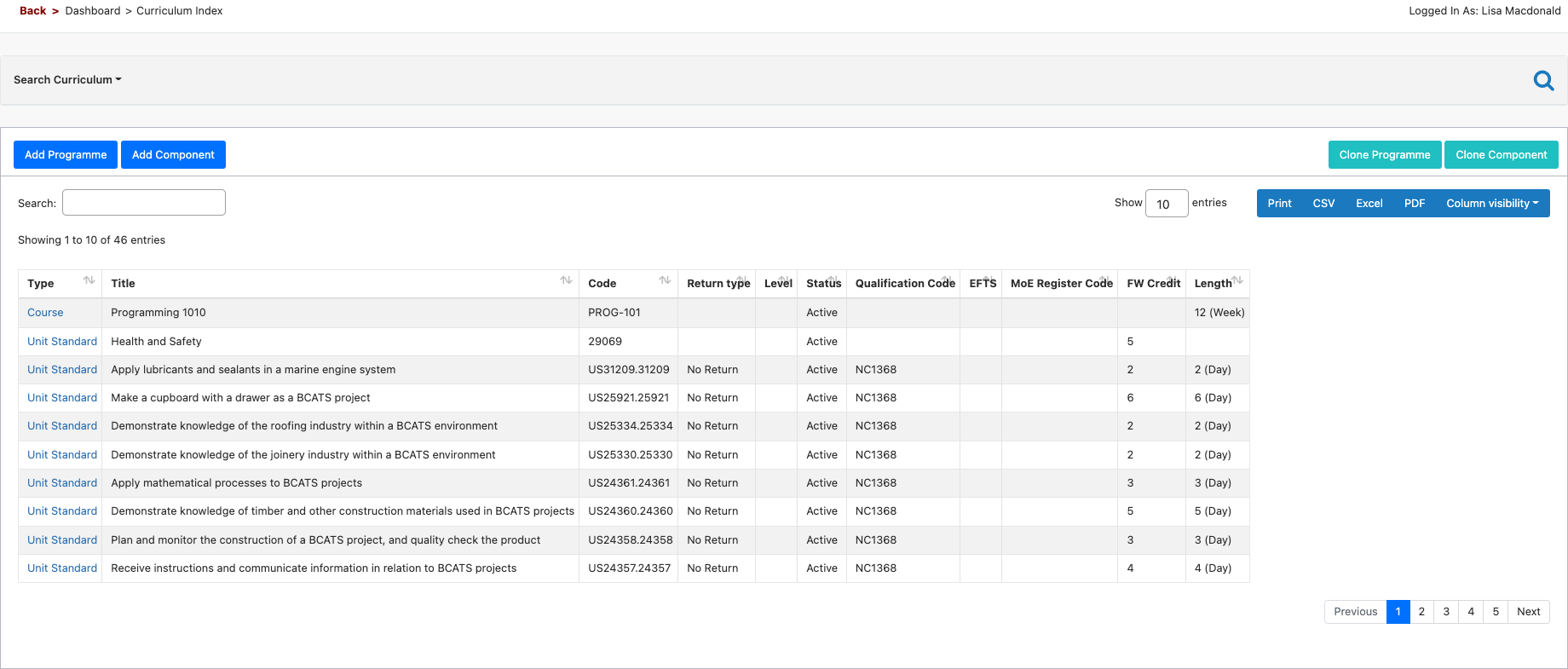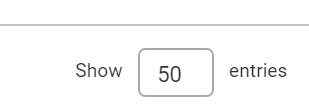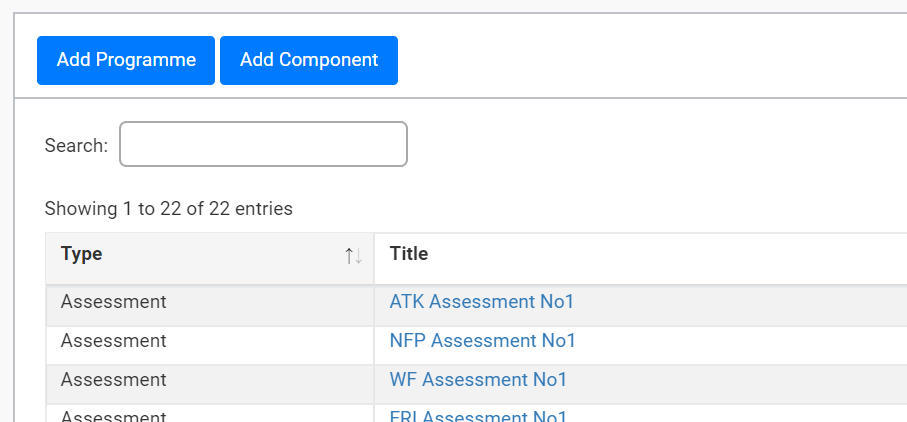On this page:
What are Grids
Grids are used often within SELMA and provide a functional, practical way of displaying large batches of information. Below is an example of the Curriculum Grid (Curriculum -> Manage Curriculum) and a breakdown of its navigational capabilities.

Search
The “Search” function allows you to quickly find specific records and will produce results that match your criteria the closest – for example by entering a programme title. Quick search boxes can be used even you are not in “edit” mode.

Advanced Search
The advanced search is hidden by default and can be made visible by clicking on the arrow down next to “Search Curriculum”.
The Advanced Search allows you to enter multiple criteria and select the search types (e.g. Equals, Contains, is bigger than etc. ). The grid will reduce to all items matching your search filters. Click the arrow next to “Search Curriculum” to hide the advanced search, or click “Clear Search” to reset it completely.
Some of the search fields do not allow you to select a search type, but contain a drop-down menu with relevant options.

Viewing and Customising a Grid
Right below the search box, an indicator will show you how many rows are displayed in your grid results. This number decreases or increases as you modify the search criteria.

By default, a grid displays 10 entries per page. If the search results return a large amount of relevant entries, you can increase the number of rows displayed by clicking on the number next to “Show Entries”. Select between 10, 25, 50 or 100 rows to be displayed per page.

Navigate multiple pages by scrolling to the bottom of the grid and clicking on a page number or via “Previous” and “Next” buttons.

On the right corner of the grid header, use the ‘Column Visibility’ dropdown menu to customise which columns are visible on the grid. Click on any column name to hide it from the grid (highlighted grey when hidden), or click again to display it.

Exports
Once you have searched, filtered and chosen columns, you can export your selection conveniently into a PDF, Excel or CSV file.



